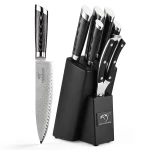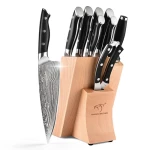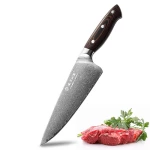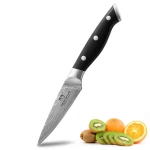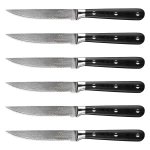How to oil a cutting board for smooth slicing
Introduction: Maintaining a well-oiled cutting board is essential for both its longevity and ensuring smooth slicing and chopping. Regularly oiling your cutting board helps prevent the wood from drying out, cracking, and absorbing food odors. In this guide, we will outline the step-by-step process to oil a cutting board, enabling you to enjoy seamless food preparation and protect your board for years to come.
Materials Needed:
- Clean, dry cutting board
- Food-grade oil (such as mineral oil or cutting board oil)
- Clean cloth or paper towels
Step 1: Clean the Cutting Board: Begin by thoroughly cleaning the cutting board using warm, soapy water and a gentle brush or sponge. Rinse off any soap residue and dry the board completely with a clean towel.
Step 2: Choose the Right Oil: Select a food-grade oil specifically designed for cutting boards. Mineral oil is a popular choice due to its neutral odor and ability to resist rancidity. Alternatively, you can opt for cutting board oil, which often contains additional protective elements.
Step 3: Apply the Oil: Pour a small amount of oil onto the cutting board's surface, spreading it evenly with a clean cloth or paper towel. Ensure that you cover the entire surface, including the sides and edges. Allow the oil to penetrate the wood for a few minutes.
Step 4: Rub the Oil into the Wood: Using firm yet gentle pressure, rub the oil into the cutting board's surface in the direction of the grain. This helps the oil penetrate the wood fibers, nourishing and protecting them. Continue rubbing until the wood no longer absorbs the oil and appears saturated.
Step 5: Let the Oil Settle: Allow the cutting board to sit undisturbed for a few hours or overnight. This allows the oil to seep deeper into the wood and aids in the absorption process. If necessary, wipe off any excess oil that has not been absorbed.
Step 6: Reapply the Oil: For optimal protection, repeat the oiling process every few weeks or as needed. Over time, the cutting board may require more frequent oiling, especially if it starts to look dry or dull.
Additional Tips:
- Be generous with the oil, but avoid oversaturation. Excess oil can create a sticky residue on the board's surface.
- Store the cutting board in a cool, dry place to minimize exposure to moisture.
- Regularly sanitize the cutting board using a solution of vinegar and water or a mild bleach solution, and allow it to dry completely before oiling.
Conclusion: By following these simple steps to oil your cutting board, you can maintain its smoothness and enhance its longevity. Regular oiling not only provides protection against drying and cracking but also ensures a sanitary surface for food preparation. Remember to clean the cutting board before applying oil and choose a food-grade oil suitable for the task. With proper care, your cutting board will serve you well, allowing for effortless and enjoyable slicing and chopping in the kitchen.

